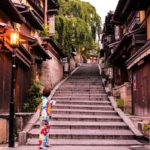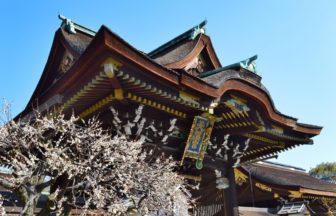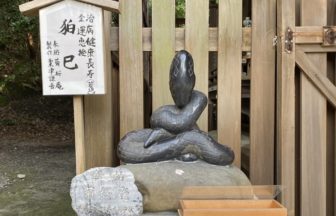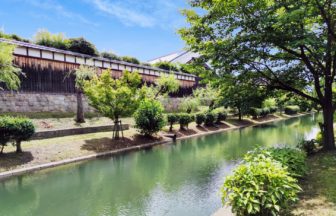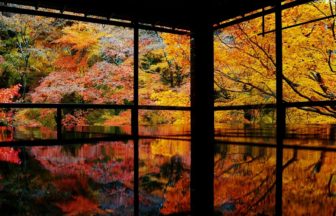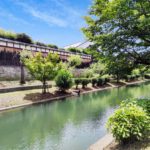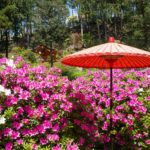Kyoto was the ancient capital of Japan from 794 to 1868, a time when Japanese culture and traditions flourished. Today it is known for its historic and cultural value with thousands of temples, shrines and priceless national treasures. And also Kyoto has one of the world’s largest collections of UNESCO World Heritage Sites. No trip to Kyoto would be complete without visiting some of them.
There are some regulations and criteria for the designation of UNESCO World Heritage Sites, but the important thing is how Kyoto illustrates the development of Japanese wooden architecture, particularly religious architecture, and the art of Japanese gardens, which has influenced landscape gardening the world over.
Kyoto UNESCO World Heritage Sites
Here, we’ve ordered all of Kyoto’s 17 World Heritage Sites in order of how easy to access each one is. Of course, this is a highly subjective list, but it’s based on several even dozens of visits to each one.
The list of Seventeen Kyoto UNESCO World Heritage Sites
Byodoin Temple
Ujigami Shrine
Daigoji Temple
Nijo Castle
Nishi Hongaji Temple
Toji Temple
Saihoji Temple
Tenryuji Temple
Kosanji Temple
Ninnaji Temple
Ryoanji Temple
Kinkakuji Temple
Kamigamo Shrine
Shimogammo
Hieizan Enryakuji Temple
Ginkakuji Temple
Kiyomizu Temple
Byodoin
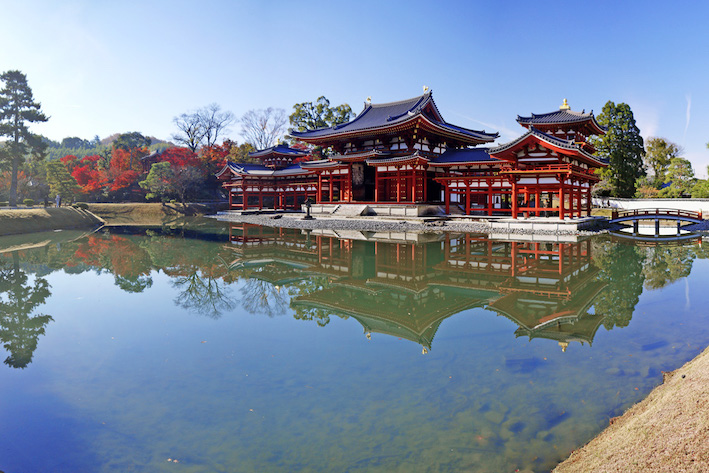
Byodoin Temple, which can be seen on the back of Japan’s 10 yen coin, is the star attraction Uji, a small city to the southeast of Kyoto. It is a Pure Land Buddhist temple founded in 1052 and renowned for its statues of Phoenix.
The background of history helps you understand how great Byodoin is. In the mid-Heian period, the “Third Age of Buddhism” theory was believed widely. That theory is one of the thoughts of Buddhism that is an era of the decline of Buddhism and no one can achieve enlightenment. This means no one can be saved no matter what they try hard. It is so pitty.
Thus, the thought of the Third Age of Buddhism captivated the hearts of court nobles, and Amida-do Hall was constructed in various places, which is because the belief of Amida ‘if someone believes in Amida Nyorai, he will come and guide the person to the heavens at the time of death. The most powerful politician Fujiwara family ordered the construction of its most spectacular Buddhist Pure Land and the principle image of Amitabha Nyorai.
The principle image of Amitabha Nyorai is also designated as a world heritage. It was attributed to the famed sculptor Jocho. He created his own style and expression. There were a lot of his artworks at that time, but unfortunately, they were lost because of fire and some wars.
Together with its garden, the temple represents the Pure Land Paradise and was influential on later temple construction.
【Information】
Address:
116, Uji Renge, Uji City, Kyoto, 611-0021
Access:
A 10-minute walk from “Uji” Sta. on a JR/ Keihan line.
Time:
Garden/ 8:30~17:30(Close Reception 17:15)
Hoōdo inside tour/ 9:30~16:10 (every 20-minute, max 30 people)
Admission Fee:
600 yen (Adult), 400 yen (Older than 12-year old ), 300 yen (Older than 6-year old)
Ujigami Shrine

Ujigami Shrine is the oldest standing shrine in Japan. Although there is no official record of when it was first constructed, experts estimate that Ujigami Shrine was well established by 1060. It was closely linked to Byodoin Temple as its “guardian shrine”.
This shrine is notable for its main hall, or sanctuary, which dates back to the late Heian period (794-1185), and as such is the oldest building in the Nagare-zukuri architectural style, one of the most common shrine architecture styles: a curved asymmetrical roof extends out more on the side of the main entrance than on the opposite side to provide shelter for worshipers. This architecture style was influential on later shrine construction.
If you want to learn more about Ujigami Shrine, let’s check this article.
Two Spots Where to Visit in Uji, Kyoto
【Information】
Address:
59, Uji Yamada, Uji City, Kyoto 611-0021
Access:
A 10-minute walk from “Uji” St. on the Keihan Uji line
A 15-minute walk from “Uji” St. on the JR Nara line
Time:
9:00~16:30
*Depends on the season
Admission Fee:
Free
Daigoji Temple
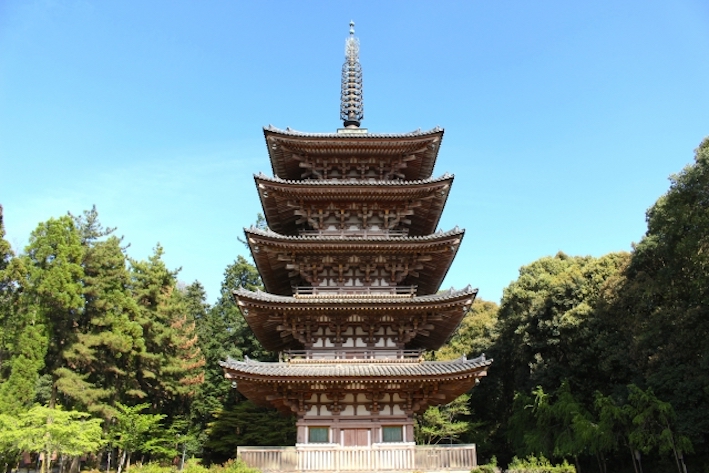
Daigoji Temple is the large temple complex stands southeast of central Kyoto and includes an entire mountainside. It is famous for its five-story pagoda and magnificent cherry blossoms in spring and fall foliage in autumn. In 874, a Buddhist monk Shobo, who is known under his posthumous name of Rigen Daishi, built a hermitage to which Kannon (Avalokitesvara) statues of Juntei and Nyoirin were dedicated on the top of the Kamidaigo mountain where he discovered a well of the spiritual water named Daigo through an inspiration from a local god Yokoo Daimyojin.
Daigoji Temple plays an important role as the main temple of the Shingon school Ono branch in a history of Japanese Buddhism and the Buddhism cultural assets in Kyoto because it has more than 150,000 treasures including National Treasures and important cultural assets. Their gardens are also one of the represents of the Momoyama period (1568 – 1600) and designated as scenic beauty. In the Shimo Daigo area stands a 38 meter tall, five-storied pagoda that is Kyoto’s oldest verified building. Built in 951, the pagoda is the only structure to survive the fires that have repeatedly destroyed Daigoji over the centuries and should not be missed.
【Information】
Address:
22 Higashioji-Cho, Daigo, Fushimi-Ku, Kyoto 601-1325
Access:
A 10-minute walk from “Daigo ” St. of the Subway Tozai line
Time:
9:00~17:00 (March 1st to 1st Sunday of December)
9:00~16:30 (The following day of 1st Sunday of December to The end of February)
Admission Fee:
1,500 yen (Adult), 1,000 yen (Older than 12-year old ), Free (Younger than 12-year old)
800 yen (Adult), 600 yen (Older than 12-year old ), Free (Younger than 12-year old)
Do you need more information?
You should receive such local information of Kyoto by an application “KoI APP”.
With this application, even if you don’t have Wi-Fi, you can find nearby stores and so on.
You can install the application from the following URL.




